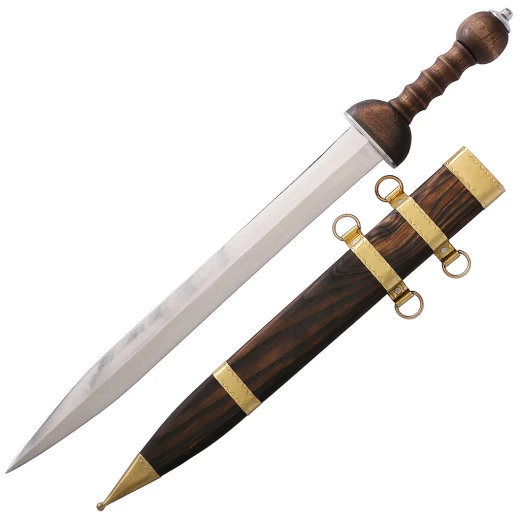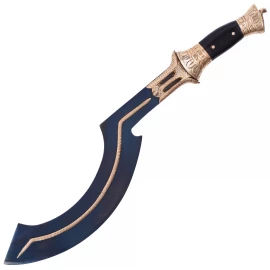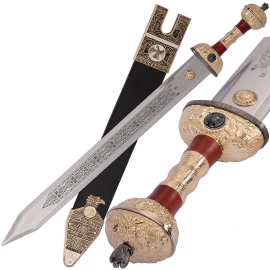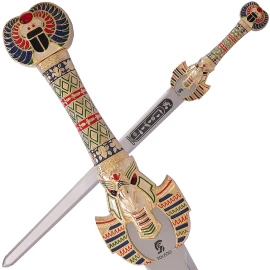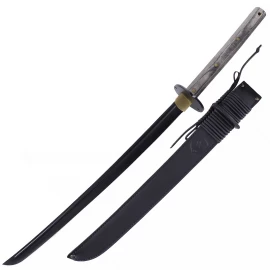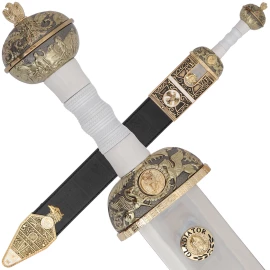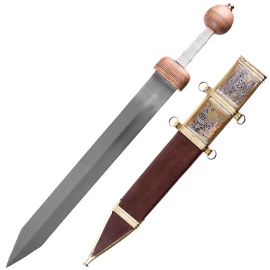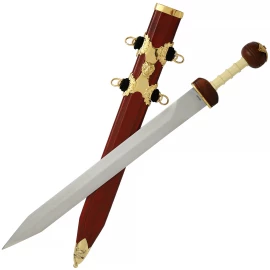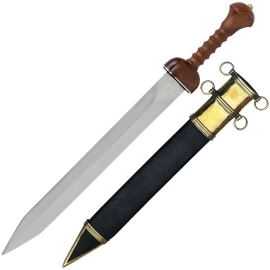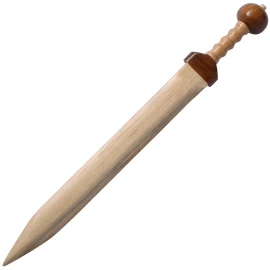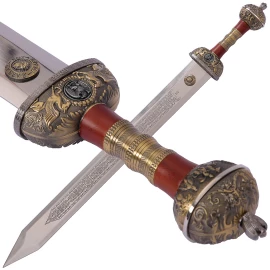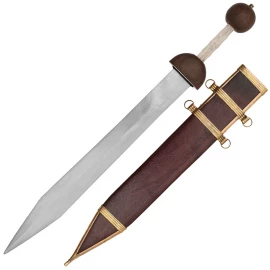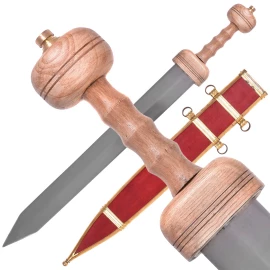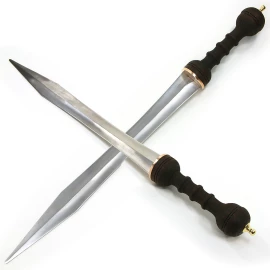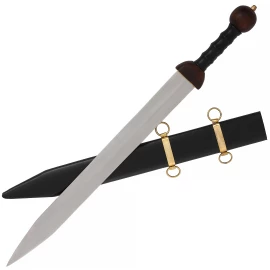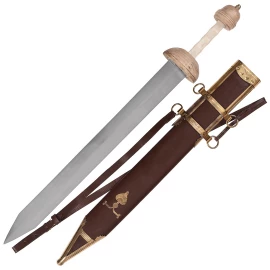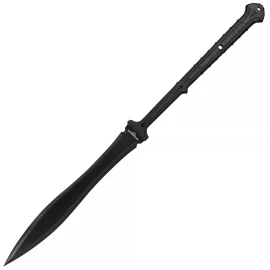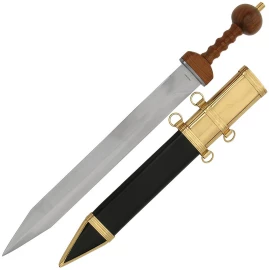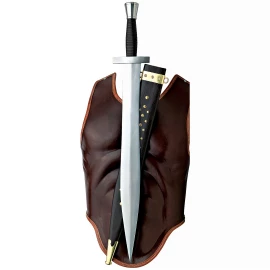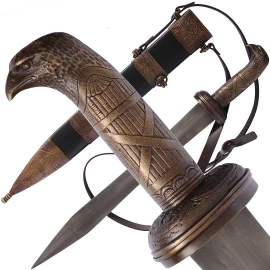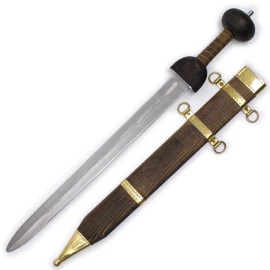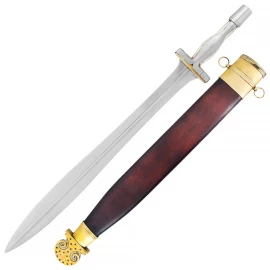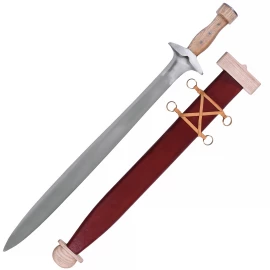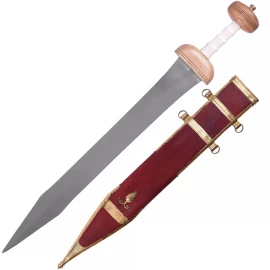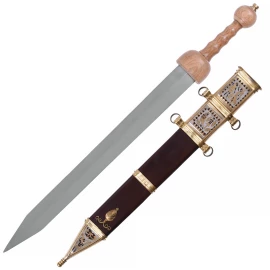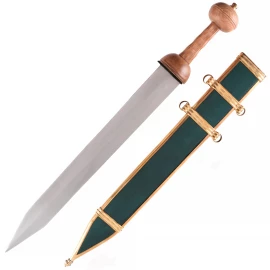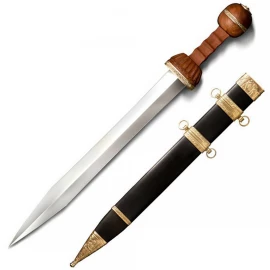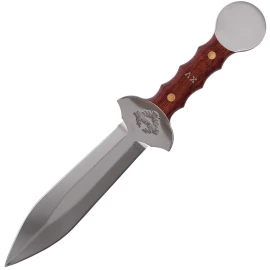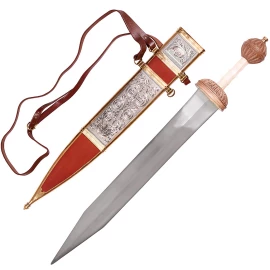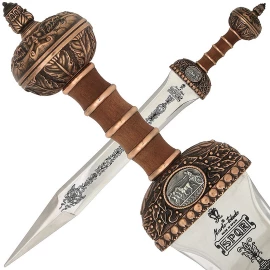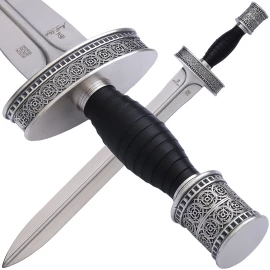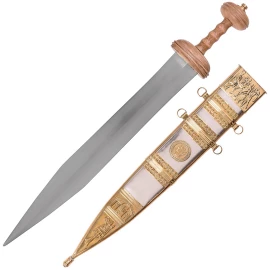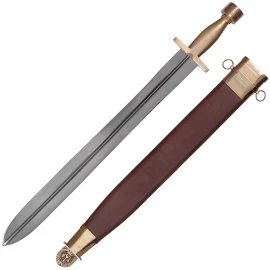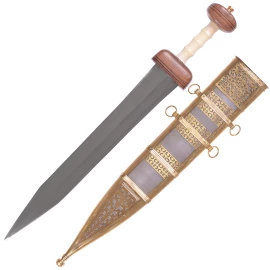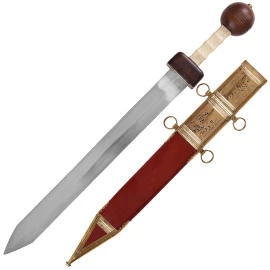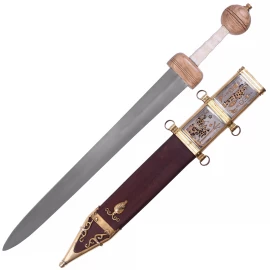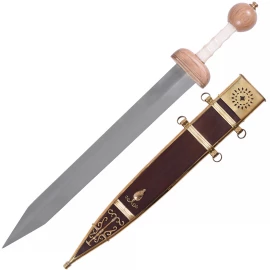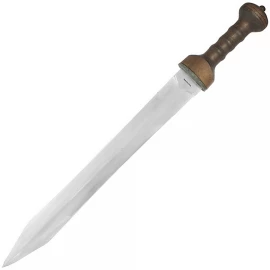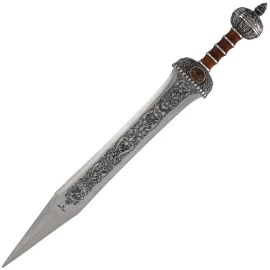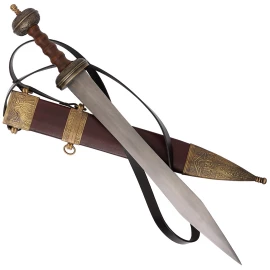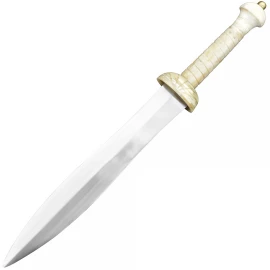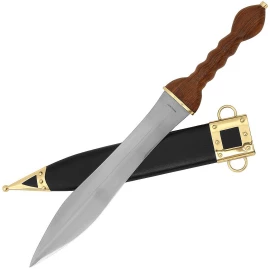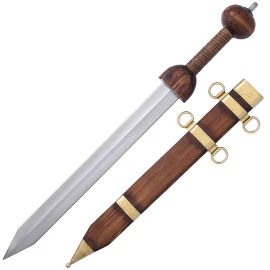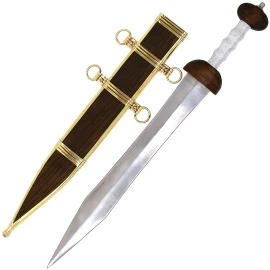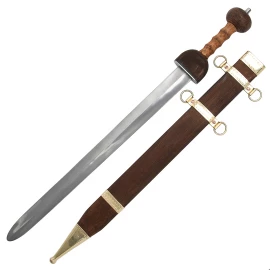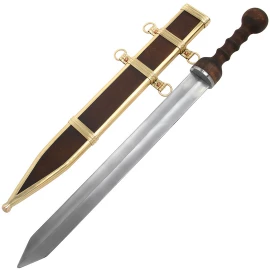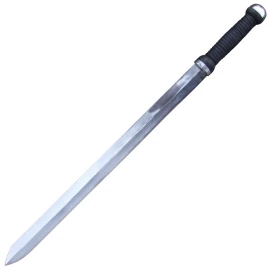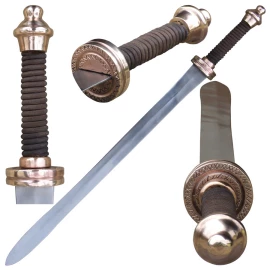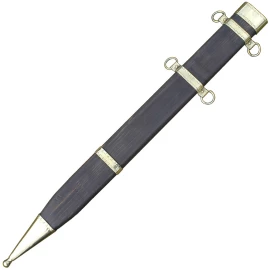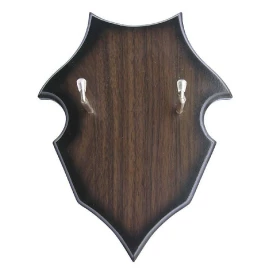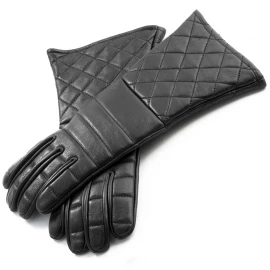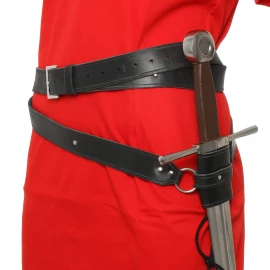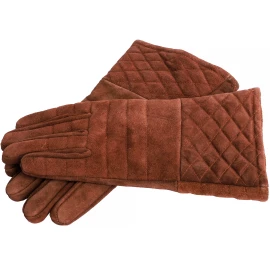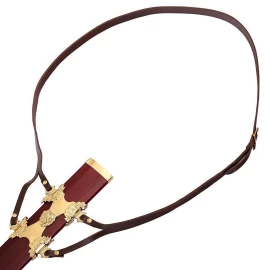Gladius Codrin, class B
2xGladius was the Roman word for sword, and is used to represent the primary sword of Ancient Rome soldiers. Early ancient Roman swords were similar to those used by the Greeks. From the 3rd century BCE, the Romans adopted swords similar to those used by the Celtiberians and others during the early part of the conquest of Hispania. More information...
Gladius Codrin, Roman short sword
Sword class B
- Total length about 648mm
- Blade length approx. 468mm
- Blade width approx. 45.1mm
- Blade thickness approx. 5.0mm
- Blade width 10cm off the point about 34.5mm
- Thickness of the blade 10cm off the point is about 5.0mm
- The blade begins to taper 145mm off the point
- The parrying element is an oval of approx. 72.4 x 35.9mm
- The pommel has a diameter of about 46.6mm
- The distance between pommel and guard (handle length) is approx. 85mm
- Fully tang blade, screwed at the end
- POB about 90mm off the parry
- Thickness of the striking edge about 0.6mm (sharp version)
- Weight of the sword approx. 660 g (with sharp blade)
- The weight of the wooden sheath with brass accents is about 258 g
- Blade made of spring steel DIN 67SiCr5, oil-quenched to approx. 53 HRC
Due to the individual manual work, small deviations can occur.
Made in the Czech Republic.
This sword was known as the Gladius Hispaniensis, or "Hispanic Sword". It was thought that they were similar to the later Mainz types, but the evidence now suggests otherwise. Rather, these early blades followed a slightly different pattern, being longer and narrower, and were probably those that Polybius considered good for both cut and thrust. Later Gladii are referred to as the Mainz, Fulham, and Pompeii types. In the late Roman period, Publius Flavius Vegetius Renatus refers to swords called semispathae (or semispathia) and spathae, for both of which he appears to consider gladius an appropriate term.
Please read our: Directions for the use of bladed weapons.
We are here for you


